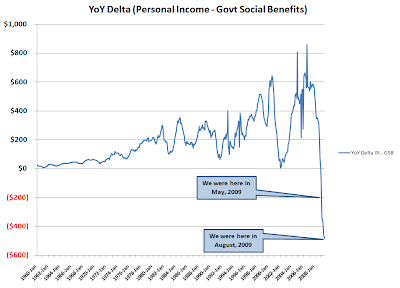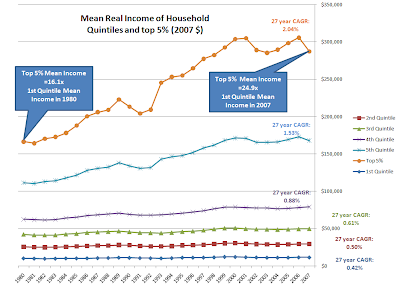
So how is the "recoveryless recovery" (seen written in all seriousness, can't make that up!) treating the hapless jobseeker now that we are seeing a decline in new claims?
Well, as of the November, 2009 data point not all that well. I decided to take a look at the year over year changes in the median duration of unemployment (UEMPMED). I chose that series over the Mean Duration (UEMPMEAN) so as to limit the impact of outliers and the pre-Great Recession chronically unemployed on the number.
What we are looking at is the amount of time in weeks in which 50% of the people move off of the UE rolls...and the amount of time required is accelerating through November on a year over year basis.
Data source:
St Louis Fed FRED: UEMPMED
















































